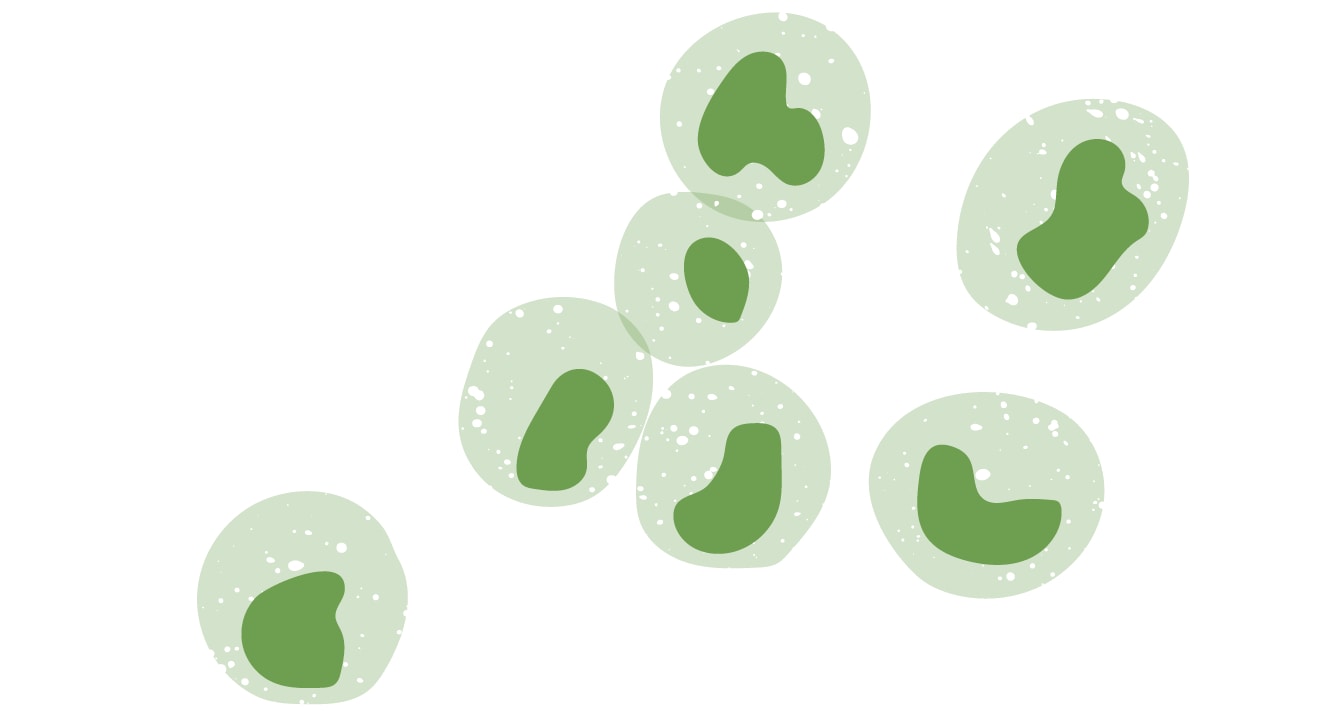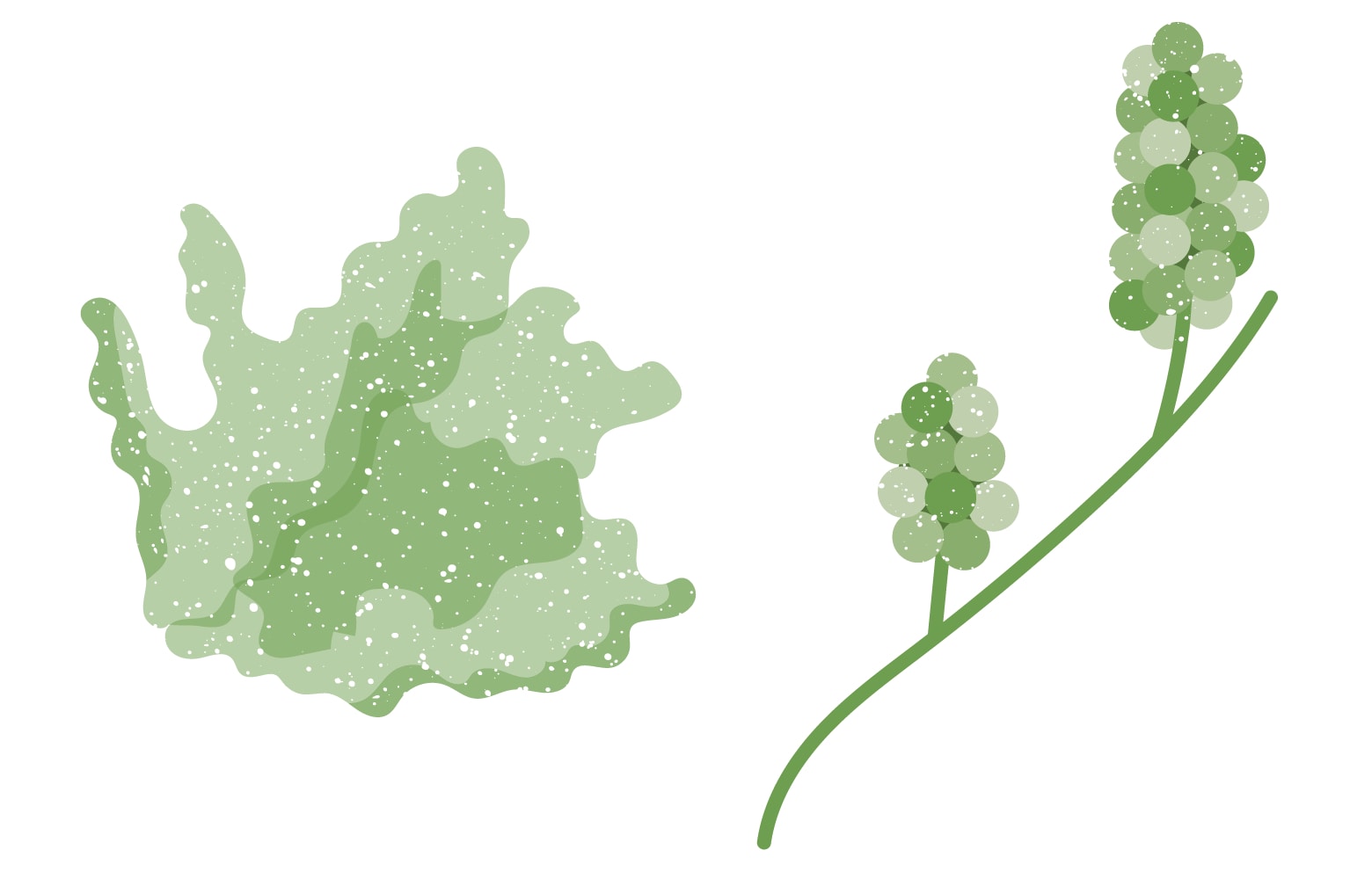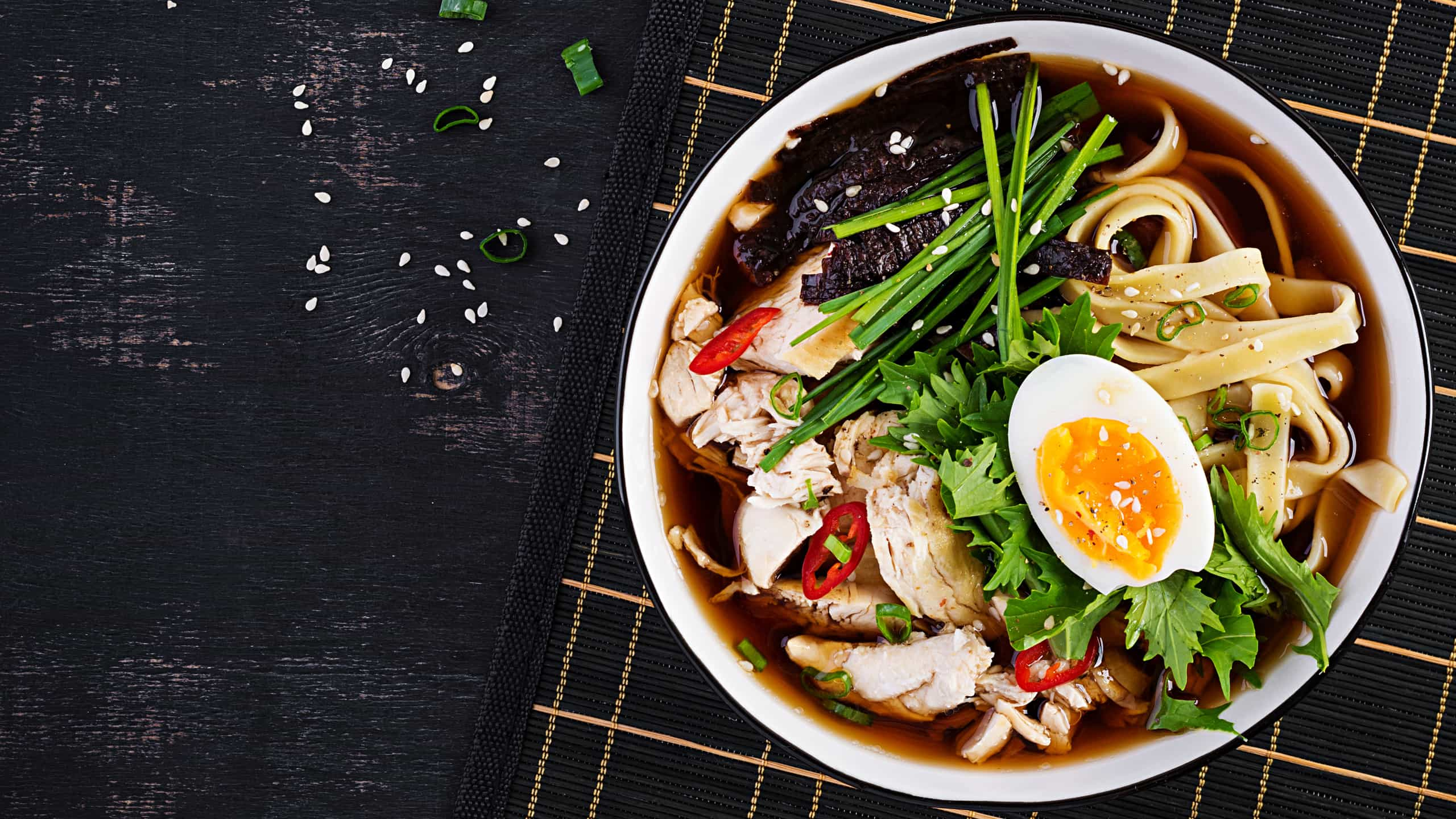From the beach to the plate (almost)
Those who have enjoyed a colourful sushi tray, have probably already eaten at least one edible seaweed, nori. Anyone who takes its spirulina supplement every day is consuming one kind of seaweed. What about agar-agar, the vegetable gelatine? Yes, it comes from edible seaweed. If these names sound weird, let us explain everything to you.
Edible seaweed have been enjoyed for millennia in China and Japan, and they are a fundamental part of these and other countries’ cuisines. Let’s dive into the world of edible seaweed: know the types, differences, health benefits, and how you can incorporate them into your diet.
Types of edible seaweed
Seaweed can be divided into two large groups: micro seaweed and macro seaweed.
-
Micro seaweed
These are organisms of microscopic dimensions that grow primarily in fresh or saltwater. They have diameters between the tenths of micrometres (a micrometre is one thousandth of a millimetre) and the tenths of millimetres. They are found in aquatic environments all over the planet, from the hottest deserts to the coldest spots of the Arctic. Micro seaweed are used in the food industry and also in the health industry, for the development of supplements and medicines.
These are some of the best known:

- Chlorella
Rich in protein and other essential nutrients, such as magnesium, niacin, phosphorus, and iron, which among others contribute to a normal metabolism.

- Spirulina
When dried, it is about 80% protein, and contains various nutrients with various functions, such as:
– Iron, which contributes to the normal transport of oxygen in the body,
– Copper, which contributes to the normal pigmentation of hair and skin,
– Vitamin B1, which contributes to the normal functioning of the heart,
– Vitamin B2, which contributes to the maintenance of normal red blood cells.
- Tetraselmis
Contains carotenoids, chlorophyll, and vitamin C, which contributes to the normal functioning of the immune system.
-
Macro seaweed
They are popularly referred to as edible seaweed and are divided into three major groups:
Red edible seaweed
Abundant in marine environments but rare in fresh water, the best-known are nori (typically associated with sushi), dulse and Irish moss.

Sea lettuce and green caviar
Green edible seaweed
Abundant in all aquatic environments – marine, freshwater, and brackish water – and even in humid terrestrial environments. They are widely used in gourmet cuisine or even in traditional western recipes. Hard to believe? Gutweed, for example, is much appreciated in the Azores and used to make “tortas”!, a delicacy of the island of Corvo. Sea lettuce, used in salads and soups, or green caviar, a seaweed that looks like caviar and is widely used in the Philippine cuisine, are some of the examples.
Brown edible seaweed
Brown seaweed account for most edible seaweed and are especially appreciated in the various Asian cuisines. For example:
- Wakame, an ingredient in miso soup,
- Kombu, widely used in Japan as a seasoning,
- Black tang, found on the coasts of the North Sea, the western Baltic Sea and the Atlantic and Pacific Oceans,
- Sea spaghetti, widely used in salads instead of pasta,
- Aramé, of very mild flavour,
- Laver seaweed, an absolute favourite in Wales,
- Gim (or kim), used in Korea,
- Hijiki, famous in Japan.
Nutritional properties of edible seaweed
Virtually all edible seaweed are rich in iodine, a very important mineral for the proper functioning of the thyroid. Furthermore, almost all edible seaweed are excellent sources of micronutrients such as folic acid, calcium, magnesium, zinc, iron, phosphorus, and selenium.
How to use edible seaweed
In Asian cuisines, edible seaweed are used as an ordinary vegetable. Many of them are sold fresh, but virtually all can be sold dehydrated, especially if exported. The ones you’ll most likely find will be dried, so you’ll have to hydrate them to use. If you want to use them “raw”, you can hydrate for a few minutes in water; if you are going to eat them cooked, you can hydrate while cooking.
But then, in which recipes and dishes can it be used? According to Japan, China, Korea, Philippines, New Zealand, Ireland, Wales, or even Azores and Madeira, many!
- Black tang is delicious when fried in bacon fat, seasoned with lemon juice and pepper, and served as a side to roasted meats.
- Nori and gim seaweed, although different, are consumed in similar ways. In addition to being used in sushi or as a wrap, they are also finely chopped and used as seasoning, or toasted in the oven and turned into chips, or into a salad with soy sauce, sesame oil, garlic, and chives.
- Wakame is a substitute for spinach or arugula in salads or to flavour soup. Kombu, which also shines in soups and salads, can be used as a spice in stews and stews; in Japan, it is widely used to make broths. Try some dulse flakes on your breakfast scrambled eggs or make a refreshing savoury infusion.
Don’t forget vegetarian and vegan dishes, where edible seaweed can give a seafood taste. Perfect for a vegetarian tuna salad, with no tuna but lots of sea flavour.
In a nutshell: in salads, in soups, as side dishes, raw or toasted as a snack, chopped and used as herbs, crushed and incorporated into smoothies, in a stew or a risotto, edible seaweed can be enjoyed in many ways and are delicious.





